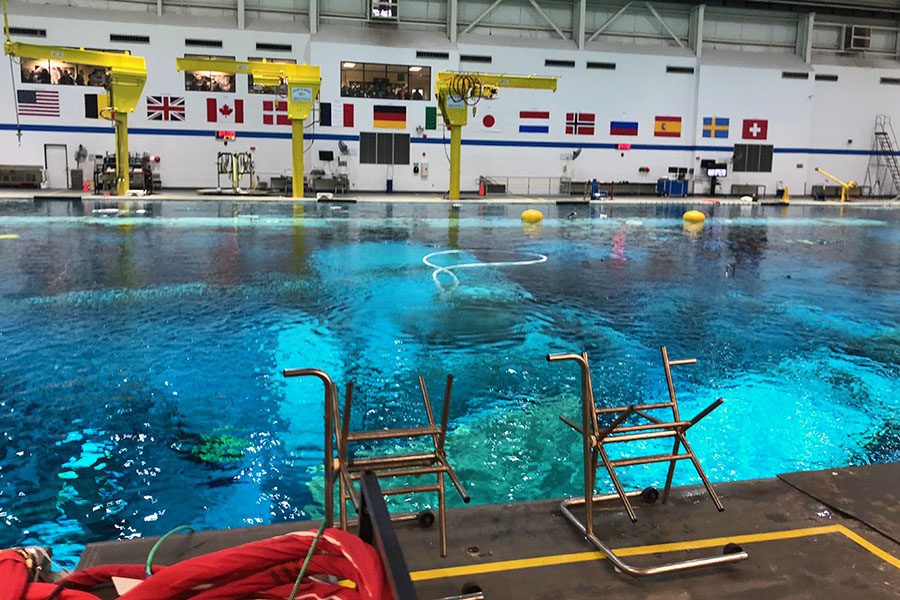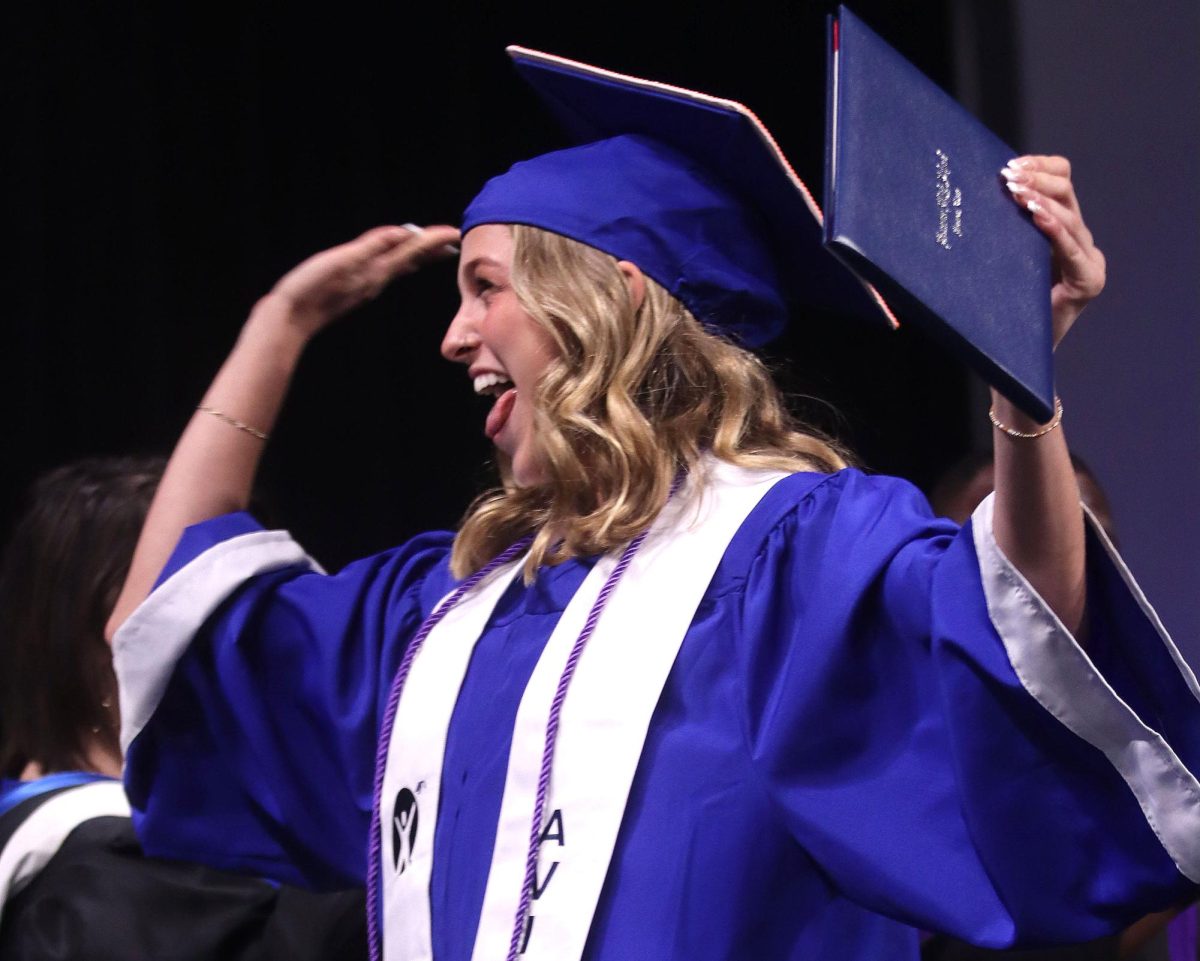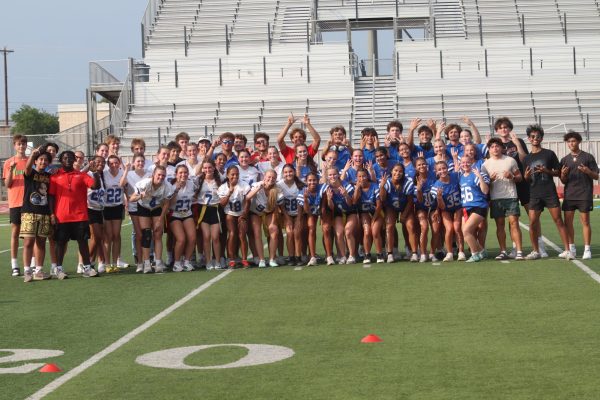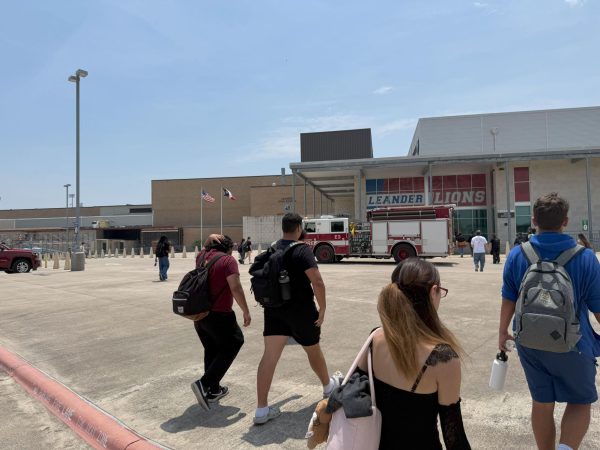Out of this world
CJ Everson visits Oceaneering Space Systems
CJ Everson was also able to tour some of NASA’s facilities during his time for COOL week. However, his main task while there was to create a design to fix a problem the ISS is having.
February 20, 2018
Two weeks ago seniors from all around LISD were given the chance to do week long internships at jobs all around the state, country and world. This week is called COOL week and was implemented to allow seniors to learn about jobs they are possibly interested in for after college. This way they could get a small taste of these careers which would give them a better idea if they actually do want to pursue these jobs. During this week we will be featuring columns from several seniors who participated in COOL week. Here is CJ Everson’s:
COOL week at NASA was an amazing experience that taught me a lot about the field of engineering and specifically engineering for space. I was placed in the company Oceaneering Space Systems, a subcontractor of NASA that builds many specialized parts for NASA spacecraft and the International Space Station. Oceaneering works in combination with other subcontractors like Lockheed Martin and Boeing to create a finished product for NASA like the upcoming Orion capsule that is designed to take humans back to the Moon and on to Mars.
I initially wanted to do COOL week because I believed that it would provide me valuable job experience and information that I could not get from normal high school about the career field I want to go into. While it did do this, it also provided me with connections to amazing engineers and astronauts who have been in the field for years. I was able to ask questions and get real answers about the field of engineering and what it is like to be an engineer. In order to get the placement I had to apply for the spot specifically and submit additional materials to be considered for the spot. I was lucky to be one of the five students chosen for the position along with two people from Vandegrift and two from Cedar Park.
While at my job site, myself and the other four students were tasked with solving a real issue aboard the ISS today. Ammonia needs to be vented into space from the ISS every so often when repairs need to be made on cooling lines. To do this astronauts have to go outside the space station and attach a series of hoses to vent the coolant from the part of the loop they are working on without getting any ammonia on their suits. Recently, this hose has been kinking and bending due to misuse by the astronauts as it is difficult to handle in the bulky space suits and this may lead to leaks in the future which would be very bad. We were tasked with coming up with a new system for storage and venting of the ammonia as to ensure that it could be safety vented.
Undertaking this was challenging and fun as we had very strict weight and size constraints as to make the system cost effective, practical, safe, and compatible with the current systems in place aboard the ISS. We ended up presenting two different solutions to the vice president of Oceaneering Space Systems and former astronaut, Mike Bloomfield as well as other engineers and employees. Going through the presentation process was also very beneficial as our designs were up for debate in front of real engineers in a manner similar to that of a real design meeting. At the end of the presentation the engineers said that they enjoyed our design and were impressed at how much work we were able to get done in a week.
Midway through the week long internship I was able to go on a congressional tour of the NASA facilities. I was able to walk through mock-ups of the ISS and other past and future spaceship designs. I was also able to see the Neutral Buoyancy Laboratory which contains one of the largest man made pools on earth in which astronauts are trained to operate outside of the Space Station. While at these labs I talked to a diver who had been working at the NBL for years and was able to share his insight into the workings of NASA and the amount of time spent on putting people into space for the advancement of mankind. We ended the tour at Rocket Park which contains a full sized and formerly functioning Saturn V rocket, the largest and most powerful rocket ever built to this day. (SpaceX and NASA have larger ones planned to return to the Moon and eventually to go to Mars.) Through these experiences I was able to get a real grasp of the immense time and effort put into putting men into space and exploring the unknown.
By participating in COOL week I was able to get a better understanding of what it takes to be an engineer and the experience as a whole helped to affirm my choice of engineering for my future career.







